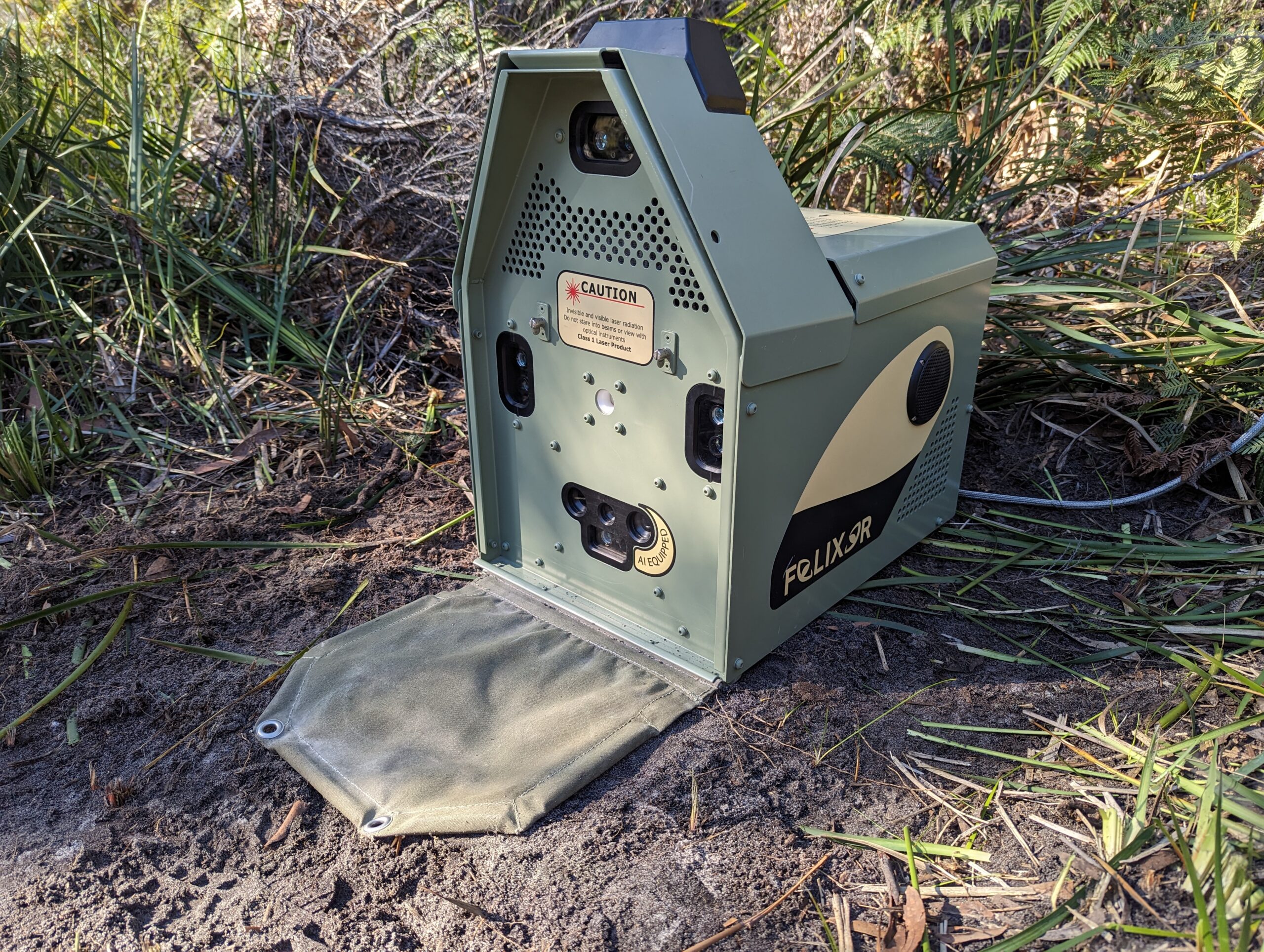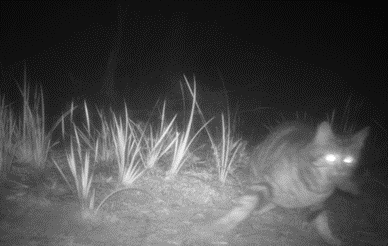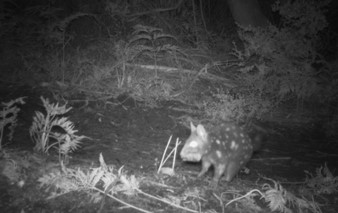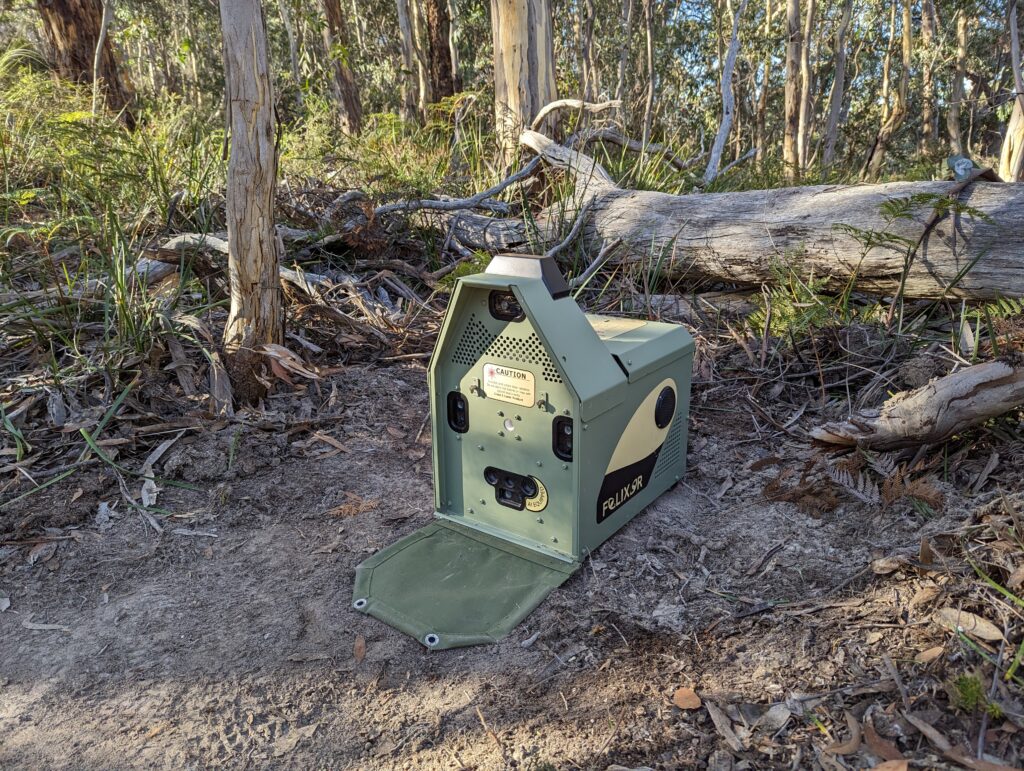Three contemporary feral cat control trials on Bruny Island have provided valuable insights into locally appropriate methods to control a feral predator in an important biodiversity hotspot.
In 2020, NRM South embarked on a partnership project to protect the nationally endangered Eastern Quoll from domestic, stray and feral cats on north Bruny Island – one of its remaining strongholds. This project was the next stage of a project that ran from 2016 to 2018 which was managed by Kingborough Council.
A foundational part of this project has been the introduction of the Bruny By-Law by Kingborough Council for domestic and stray cat management. This has provided an important legal framework for enforcing domestic cat management on the island, helping to tackle the issue of roaming pet cats and reducing the incidence of stray animals.
Alongside the management of stray, feral and domestic cats by project partners Bruny Farming and Kingborough Council, Biosecurity Tasmania has been conducting research into new and innovative methods of controlling feral cats. These methods have recently been developed in Australia and are being used successfully in control and eradication programs around the country.
To date, the primary methods of cat control on Bruny Island have been domestic cat management and trapping of strays and feral cats. Although these methods are still very important, effective feral cat control on Bruny Island needs multiple approaches.
Now that the number of cats has been reduced around heavily controlled areas such as the Neck seabird colony, the remaining cats are too wary of cage traps to be caught in this way. These new methods would not replace traditional cage trapping but work alongside to target trap shy individuals more effectively.
Three non-lethal trials have been conducted for use on Bruny Island to assess the effectiveness, potential impact on native wildlife and overall suitability of each method. All trapping work followed strict ethical guidelines in accordance with relevant permits.
Curiosity baiting
Curiosity® bait for feral cats is a meat-based sausage containing a small hard plastic pellet encapsulating a new humane toxin called para-aminopropiophenone, or PAPP. In recent years it has become a useful method to control feral cats on a landscape scale. The bait is currently being used to control and manage feral cats at numerous sites across Australia including Three Hummock Island in Tasmania. The baits are specifically targeted towards cats rather than native wildlife, as cats do not have molar teeth and tend to chew their food less. This means they swallow portions of the sausage whole including the pellet. As native species chew their food more thoroughly they are thought to reject the pellet, therefore avoiding ingestion of the toxin.
In this trail, 50 Curiosity® meat sausages (baits) were inserted with a pellet containing Rhodamine B: a non-toxic fluorescing dye. The dye is commonly used as a biomarker for bait consumption as it shows up under ultra-violet light in the whiskers of animals that have consumed baits. In this study, camera trapping showed 70% of baits were picked up by quolls within five days. Although none of the quolls trapped and assessed after the 14-day trial showed signs of having consumed the dye, by removing the baits, they made them unavailable for cats to consume. Baiting is therefore not considered to be a viable option for feral cat control on Bruny Island.
Forward-looking infrared, aka thermal shooting
In June 2021, a thermal shooting trial was run on north Bruny. The abundance of shearwaters that breed in the colonies of Cape Queen Elizabeth and The Neck attract high numbers of feral cats. Due to the risk of collapsing shearwater burrows, cage trapping of cats can only occur in the colonies between May and September, when the birds are not present. Thermal shooting may offer a solution to this obstacle. A rifle with a heat-sensitive scope attachment picks up the heat signatures of warm-blooded animals within the field of view. In the trial, we wanted to test if cats could be easily identified from other native species in the area, particularly quolls. For eight nights, trained personnel attempted to sight cats within the shearwater colony. Cats were sighted on three of the eight nights and were easily discernible from other native animals including quolls and possums, both from their movement patterns and body shape. As a result of the trial, it was recommended that thermal shooting be used as control technique in the future.
Felixer grooming traps
This trial aimed to gather information on whether Felixer traps can safely be used around Bruny Island’s wildlife, such as quolls, shearwaters and possums. Felixer traps use AI sensors to identify cats and spray them with a lethal toxin as they pass by. In 2021 five Felixers were set up in ‘non-lethal, photo only mode’ across North Bruny Island. They were left in place for 4-5 months taking images of animals that moved in front of them, gathering information on whether the traps could correctly distinguish between native species and feral cats. A total of 1141 native animals (including brushtail possums, wallabies and eastern quolls) were photographed in front of the traps and none of these animals were misidentified as a cat. There were 11 occasions when a cat moved in front of the trap and four were identified by the traps as targets. Those cats were all individuals that have been difficult to capture using traditional cage trapping methods. This trial has shown that Felixers do not pose a risk to native wildlife and it was highly recommended that these devices be tested further for use as a control method of feral cats on Bruny Island.
These three trials have provided valuable information on the control methods most likely to be effective for managing feral cats on Bruny Island. To date, through cage trapping a total of 119 cats have been removed from Bruny Island. Approximately 30% of these were feral cats, while the rest were stray and roaming domestic cats – many of which have been returned to their owners or rehomed. A final short-term trial of Felixers in lethal mode was conducted over a month in May 2023. Although two cats were detected by the devices, none were targeted as the devices were set to ‘conservative’ mode to limit any possible misidentification of native wildlife. From this trial we recommend a longer deployment of Felixers to target those cats that are difficult to catch with traditional cage traps.
Alongside other management strategies such as trapping and domestic cat management, this project has helped to protect not just Eastern Quolls, but also many of the threatened and native wildlife species that call Bruny Island home, and has provided valuable information for future management actions.
This project is supported by NRM South through funding from the Australian Government’s National Landcare Program. It is a partnership project with Kingborough Council, Biosecurity Tasmania, Bruny Farming, weetapoona Aboriginal Corporation and the Ten Lives Cat Centre and runs until June 2023.




